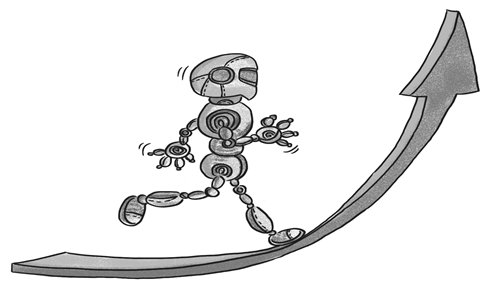HOME >> BUSINESS
Digital economy can drive up domestic demand
By Cao Heping Source:Global Times Published: 2019/6/16 20:43:39

Illustration: Xia Qing/GT
Data shows that Chinese imports declined by 2.5 percent year-on-year in May. Some interpret the decrease as a sign of a lack of domestic demand, as reflected by the sharp decrease in imports. Also, the prospects of global trade improvement are less certain under the "Trump slump." If China fails to boost domestic demand, will it be able to keep reaching the 5.5 to 7.5 percent medium-high growth interval?
The answer is yes. But, the further question is what kind of policy should be adopted to achieve this? China should determine which institutional factors and policy mechanism are holding back domestic demand. What short and long-term policies can be introduced to address these problems?
China's growth is dependent on industrial and policy paths, reflecting some of the institutional reasons holding back domestic demand. This dependence has increased the cost of economic transformation.
The US is a benchmark that China is trying to match in terms of economic development after the introduction of reforms and opening-up. But in China, the investment-driven and export-orientated industrial policy has made the investment cycle outrun the inventory cycle, which is the main cause of economic fluctuation. The US' economic fluctuation, by contrast, is mainly due to the business cycle. China's investment cycle rises and falls together with the domestic producer price index (PPI) and the consumer price index (CPI).
Meanwhile, the export-oriented policy links the two indexes to the international market. As long as other markets worldwide can consume the exports manufactured by China, the export-oriented growth model can withstand the US' economic stagnation. But China's inflation can hardly break the economic cycle and the capacity build-up within the country.
Once there is an economic downturn or certain products have saturated the market, the overcapacity will start to show. Take the steel industry as an example; the demand for steel in China has outweighed the supply since 2003; and since then, every year, the overcapacity has increased by 5 percent or higher.
With the policy dependence formed in several decades, in order to stimulate the domestic demand, the country should search for a new industrial structure that caters to the demands of Chinese consumers.
Without radically changing the industrial structure, stimulation will continue to generate overcapacity. The industries that will get the most monetary and fiscal support will be those that take up more weight in the economy. Policies targeted at firing up domestic demand exacerbate overcapacity, keep creating the assets bubble and bring down overall economic growth.
These are the institutional factors and policy mechanisms that inhibit domestic demand, and supply-side reform is a prescription to addressing this problem.
Although supply-side reforms undertaken in the past five years have been beneficial, they have, however, paid more attention to eliminating financial risks, rather than effectively solving the structural problems that occurred during the industry transformation and upgrade.
In the past few years, measures, like tightening control on money supply to ward off inflation, pushing through deleveraging without being selective about the type of financial institutes and revoking the licenses of non-banking institutions, have squeezed medium, small and micro-sized enterprises on liquidity. The effects have impacted consumers as well. The policy itself has hindered domestic demand, therefore, a more open and reasonable currency liquidity policy in the next three quarters will be imperative.
Traditional industries - real estate and automobile - have run out of their ability to stimulate domestic demand. More support should be given to innovation, research and development in strategic products and processes. Since the 18th century, every technological and industrial revolution has brought fundamental changes to the world development pattern. As artificial intelligence develops with the emergence of robots, the super economy that combines human and superhuman will prevail.
The total value of the digitized economy has reached 3.13 billion yuan ($452 million), making up 34.8 percent of China's GDP last year. The digital economy has become the driving force of domestic demand. After many years of implementing economic transformation, the Chinese economy will have unlimited prospects.
The author is a professor with the School of Economics of Peking University. bizopinion@globaltimes.com.cn
Posted in: INSIDER'S EYE